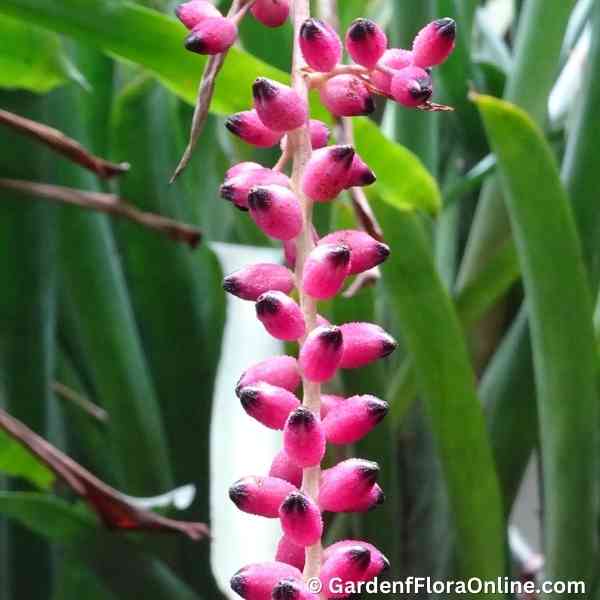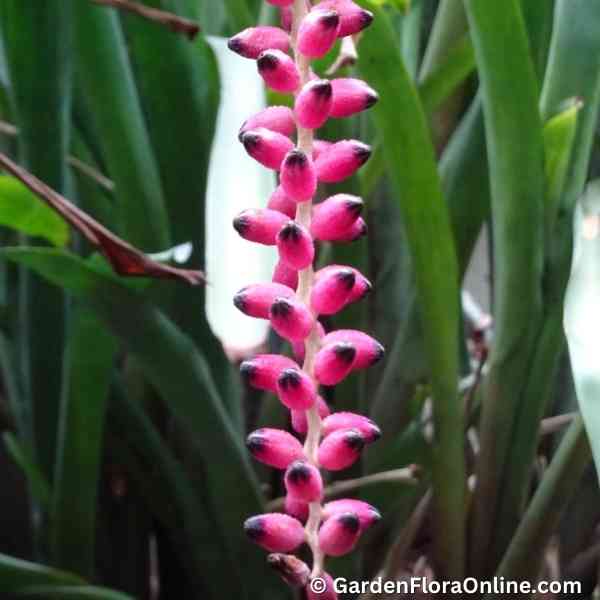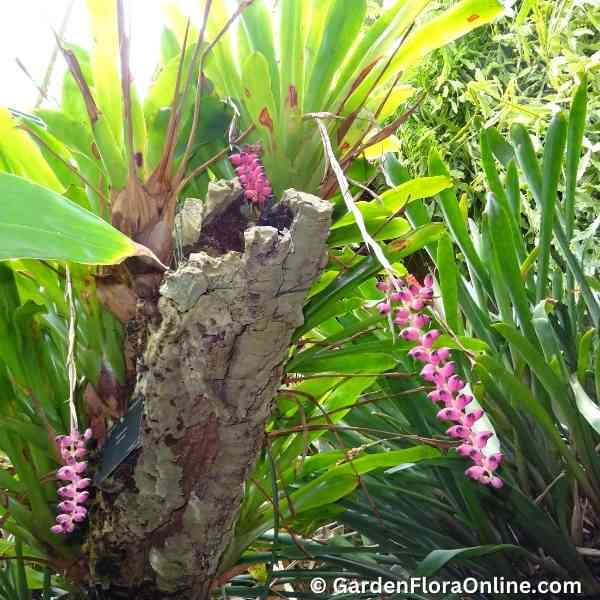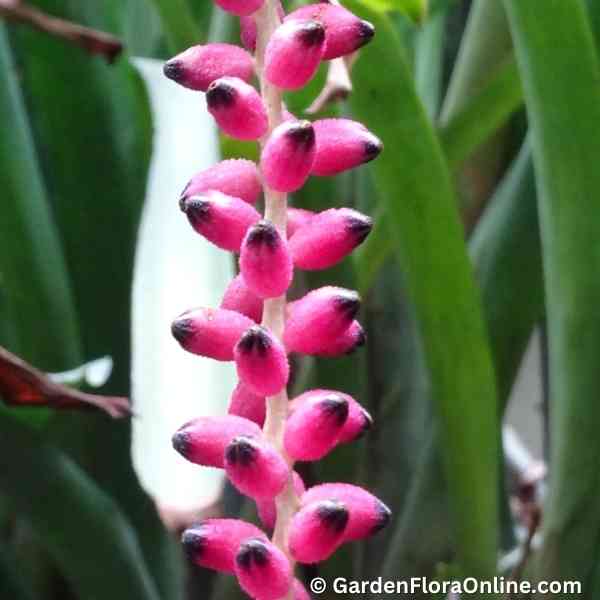Aechmea warasii
Plant stoloniferous, flowering 7-9 dm high with the inflorescence raised. Leaves forming a funnelform rosette, 35-65 cm long; sheaths obovate, 6-8 cm wide, densely brown-lepidote within; blades ligulate, contracted toward base, rounded, apiculate, 4-5 cm wide, broadly channeled, sparsely and obscurely lepidote, sparsely and minutely serrulate. Scape strongly decurved, 5 mm thick, verruculose, dark purple; scape-bracts 12-15 cm long, exceeding the internodes, linear-lanceolate, acuminate, entire, paleaceous, red becoming white outside and violet inside. Inflorescence 20-25 cm long, bipinnate at base, simple toward apex with straight, verrucose rhachis and 20-35 polystichous flowers; primary bracts like the scape-bracts, exceeding the spikes; spikes geniculate, distichously 2-5-flowered. Floral bracts minute, triangular, apiculate, paleaceous; flowers spreading, sessile, 25-30 mm long. Sepals free, asymmetric, sub-apiculate, 8-10 mm long, unarmed, dark violet with white margins; petals linear-oblong, acute, 17 mm long, bearing 2 denticulate scales at base, the blades reflexed at anthesis, violet with white margins, turning deep red; stamens included, second series filaments half-adnate to petals; anthers dorsifixed; pollen globose, 4-porate; ovary globose; placentae apical; ovules few, long-caudate (after Smith 1979).
Cultivation: Aechmea warasii, an epiphytic bromeliad native to Brazil, thrives in bright, indirect light with some tolerance for mild morning sun. It prefers warm temperatures between 18–27°C (65–80°F) and high humidity, making it ideal for tropical or indoor cultivation. Keep its central cup filled with fresh, non-chlorinated water, refreshing it regularly, and water the potting medium lightly, ensuring good drainage to avoid root rot. A well-draining mix like orchid bark or sphagnum moss works well, or it can be mounted on bark or driftwood. Fertilize monthly with a diluted balanced fertilizer during the growing season, and after flowering, propagate offsets when they are about one-third the size of the parent plant. Regular monitoring for pests like scale and mealybugs, along with good air circulation, will help maintain its health and vigor.
Etymology: The genus name Aechmea is derived from the Greek word aichme, meaning “spear point,” referring to the pointed tips of the sepals or the sharp, spiny leaves characteristic of many species in this genus. The specific epithet warasii honors the first collector (Waras) of the species.




